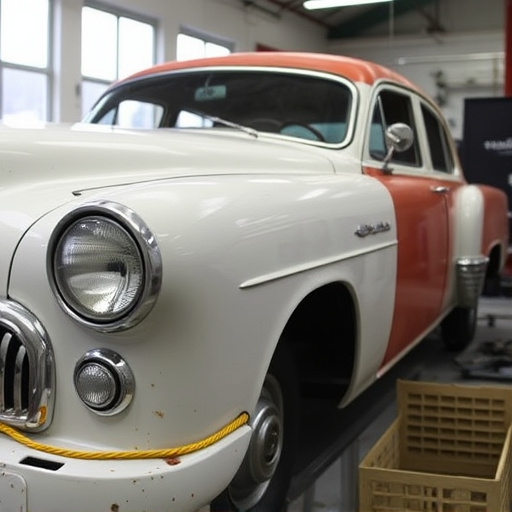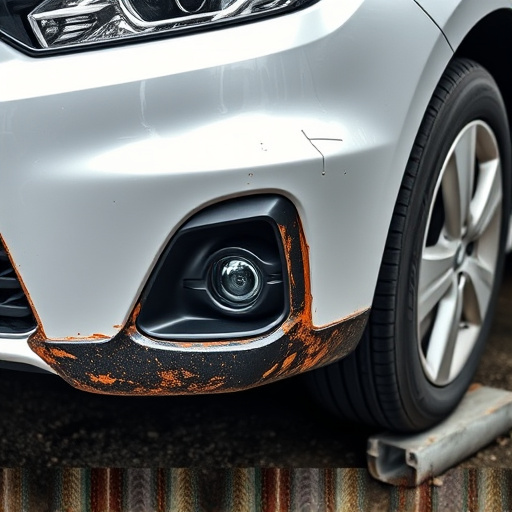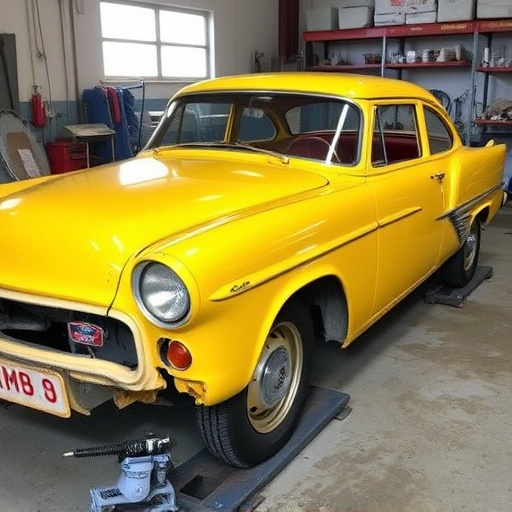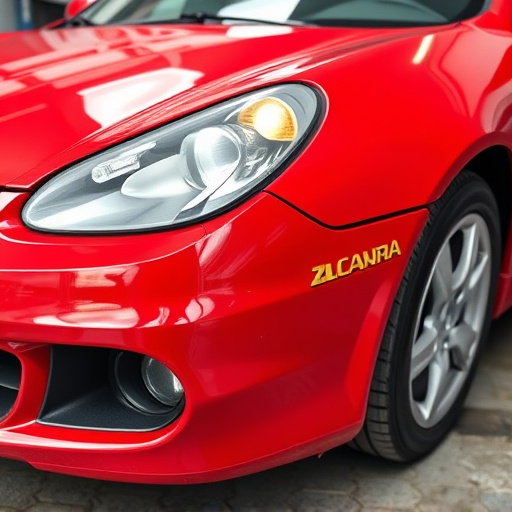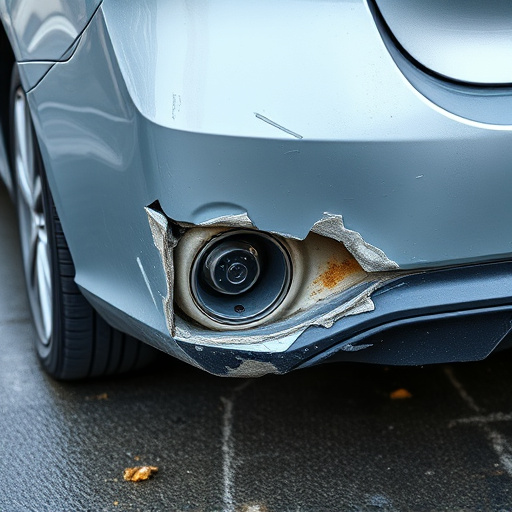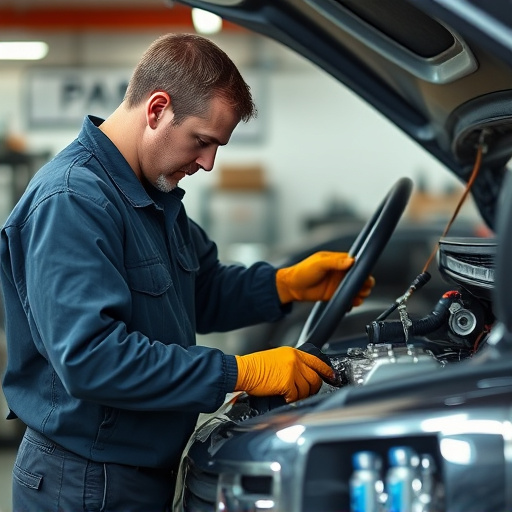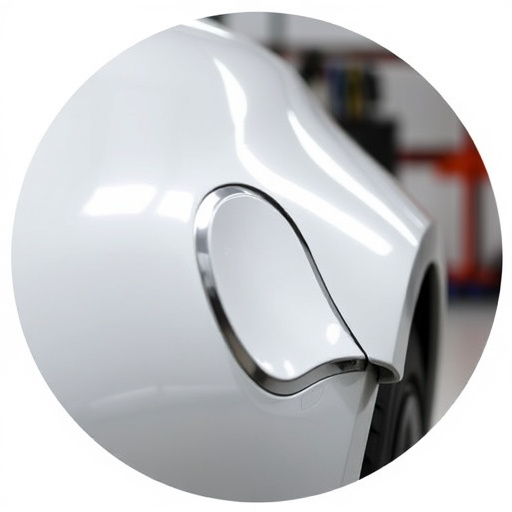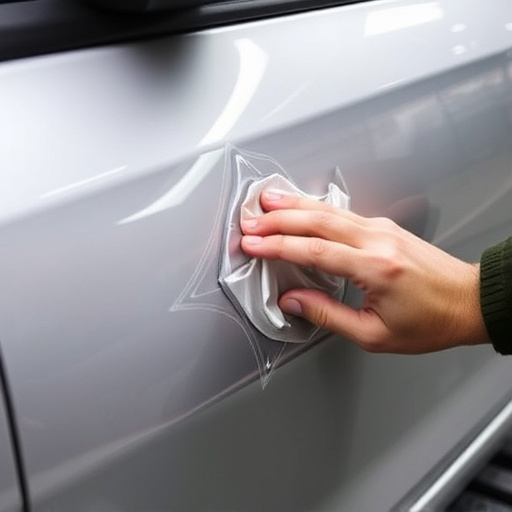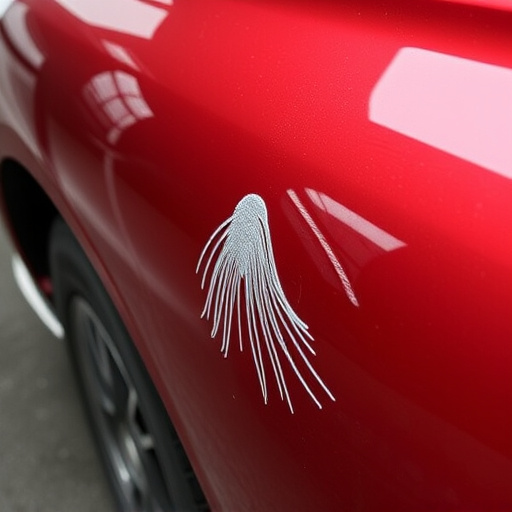Tesla's crumple zones, vital for collision energy absorption and protection of ADAS & radar sensors, require specialized repair. Body shops must accurately align replacement parts while preserving structural integrity and safety features, as misalignments can compromise functions like automatic emergency braking. Restoring a Tesla's crumple zone involves meticulous steps including jacking, cleaning, assessment, adjustment, bodywork, testing, and final road testing to maintain peak performance and safety standards.
In the pursuit of enhanced vehicle safety, Tesla has incorporated advanced crumple zones into their designs. These zones play a pivotal role in mitigating impact forces during collisions, protecting both passengers and critical electronic components. However, misalignments in ADAS (Advanced Driver-Assistance Systems) and radar sensors can compromise this safety feature, necessitating meticulous repair. This article explores Tesla crumple zone repair, delving into the challenges of ADAS and radar misalignment, and providing a step-by-step guide for effective restoration.
- Understanding Tesla's Crumple Zone and its Role in Safety
- Common Challenges in ADAS and Radar Misalignment Repair
- Step-by-Step Guide to Effective Crumple Zone Restoration for Tesla Vehicles
Understanding Tesla's Crumple Zone and its Role in Safety
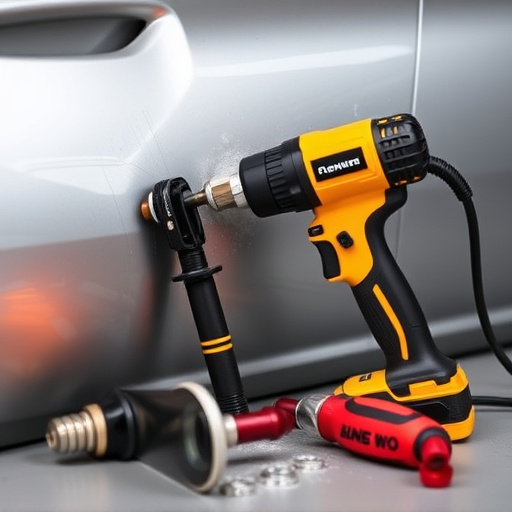
Tesla’s crumple zone is a critical component of its vehicles’ overall safety design. This specialized area of the car’s structure is engineered to absorb and distribute the impact energy during a collision, protecting both the occupants and other drivers on the road. By strategically placing high-strength materials and specific designs, Tesla aims to minimize the effects of a vehicle collision repair while enhancing passive safety features.
Understanding how the crumple zone works is essential when considering Tesla crumple zone repair. In the event of an accident, this zone allows for controlled deformation, reducing the force transmitted to the passenger cabin. This not only minimizes structural damage but also helps maintain the integrity of Advanced Driver-Assistance Systems (ADAS) and radar sensors, which are crucial for autonomous driving capabilities. Auto body shops specializing in Tesla vehicle collision repair must consider this unique feature to ensure accurate alignment and restoration of the car’s safety systems after an impact.
Common Challenges in ADAS and Radar Misalignment Repair
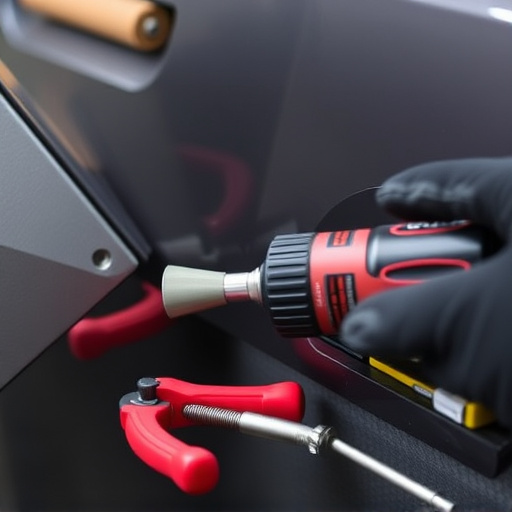
In the realm of modern automotive technology, Advanced Driver-Assistance Systems (ADAS) and radar sensors play a pivotal role in enhancing safety features. However, misalignment or errors in these systems can lead to significant challenges during Tesla crumple zone repair. One of the primary difficulties lies in accurately calibrating replacement parts to match the original equipment, ensuring seamless integration without compromising structural integrity. This process demands specialized tools and expertise to recalibrate sensors and cameras, aligning them with the vehicle’s dynamic crumple zones.
Moreover, the intricate nature of ADAS and radar systems means that even minor misalignments can result in malfunctioning safety features, such as automatic emergency braking or lane-keeping assist. Automotive body shops and collision centers must employ meticulous techniques to realign these components, often requiring advanced diagnostic tools. Car repair services that specialize in Tesla crumple zone repair understand the importance of precise alignment, ensuring not just cosmetic restoration but also the preservation of critical safety systems’ effectiveness.
Step-by-Step Guide to Effective Crumple Zone Restoration for Tesla Vehicles
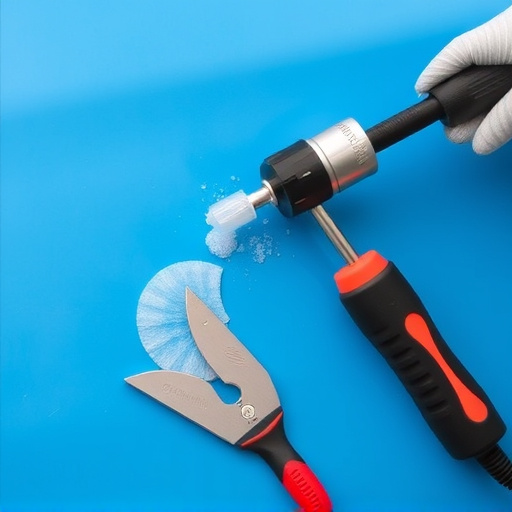
Restoring a Tesla’s crumple zone to its original specifications is crucial for maintaining optimal vehicle safety and performance, especially after misalignments in ADAS (Advanced Driver Assistance Systems) or radar sensors. Here’s a step-by-step guide for effective restoration:
1. Preparation: Begin by ensuring the car is securely jacked up and supported on sturdy stands. Disconnect any electrical components within the crumple zone, such as sensors or cameras, to prevent short circuits during repair. Clean the affected area thoroughly to remove dirt, grease, or debris that could impede the restoration process.
2. Assessment: Inspect the crumple zone closely using specialized tools designed for measuring and aligning automotive parts. Identify any misalignments in the ADAS systems or radar sensors, which may have occurred due to impact or accident damage. Compare these findings with the original manufacturer’s specifications.
3. Adjusting and Realigning: Utilize advanced techniques and equipment, often requiring specialized training, to adjust and realign the crumple zone components back to their precise positions. This step is critical for ensuring that all safety systems function harmoniously. Adjust the sensors, cameras, and other electronic components as needed to maintain proper alignment.
4. Bodywork Repair: If there are visible dents or damage to the car’s bodywork, proceed with careful repair techniques, such as panel beating and plastic welding, to restore the crumple zone to its original shape. Ensure that all repairs adhere to Tesla’s quality standards for seamless integration within the vehicle’s overall structure.
5. Testing and Calibration: After completing the physical repairs, test all ADAS systems and radar sensors to confirm accurate calibration. Use diagnostic tools to ensure each component is functioning optimally and communicating correctly with the vehicle’s central computer.
6. Final Touches: Once satisfaction is achieved with both visual inspection and system functionality, reattach any disconnected electrical components, lower the vehicle from stands, and conduct a final road test to verify safe operation.
Tesla’s crumple zone plays a critical role in vehicle safety, and proper repair after misalignment of Advanced Driver-Assistance Systems (ADAS) and radar is essential. By following a meticulous step-by-step guide for restoration, technicians can ensure optimal performance and maintain the integrity of Tesla vehicles’ safety features. Efficient Tesla crumple zone repair not only enhances structural integrity but also guarantees the continued effectiveness of ADAS and radar systems, ultimately contributing to safer driving experiences.
